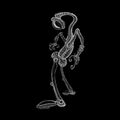Template:Selected anniversaries/October 31: Difference between revisions
Jump to navigation
Jump to search
No edit summary |
No edit summary |
||
| Line 1: | Line 1: | ||
<gallery> | <gallery> | ||
||Philip James de Loutherbourg | ||1740: Philip James de Loutherbourg born ... painter who became known for his large naval works, his elaborate set designs for London theatres, and his invention of a mechanical theatre called the "Eidophusikon". | ||
||Karl Wilhelm Gottlob Kastner | ||1783: Karl Wilhelm Gottlob Kastner born ... chemist, natural scientist, and a professor of physics and chemistry. | ||
||1802: Benoît Fourneyron born ... engineer born ... He made significant contributions to the development of water turbines. Pic. | |||
File:Karl Weierstrass.jpg|link=Karl Weierstrass (nonfiction)|1815: Mathematician and academic [[Karl Weierstrass (nonfiction)|Karl Weierstrass]] born. He will be cited as the "father of modern analysis". | File:Karl Weierstrass.jpg|link=Karl Weierstrass (nonfiction)|1815: Mathematician and academic [[Karl Weierstrass (nonfiction)|Karl Weierstrass]] born. He will be cited as the "father of modern analysis". | ||
| Line 8: | Line 10: | ||
File:The_Eel.jpg|link=The Eel|1816: Art critic and alleged math criminal [[The Eel]] escapes from [[Nacreum]], spending less than a day in prison. | File:The_Eel.jpg|link=The Eel|1816: Art critic and alleged math criminal [[The Eel]] escapes from [[Nacreum]], spending less than a day in prison. | ||
||1831 | ||1831: Paolo Mantegazza born ... neurologist, physiologist, and anthropologist ... coca. | ||
||1835 | ||1835: Adolf von Baeyer born ... chemist and academic, Nobel Prize laureate ... synthesised indigo, developed a nomenclature for cyclic compounds (that was subsequently extended and adopted as part of the IUPAC organic nomenclature). | ||
File:Galileo Ferraris.jpg|link=Galileo Ferraris (nonfiction)|1847: Physicist and electrical engineer [[Galileo Ferraris (nonfiction)|Galileo Ferraris]] born. He will be a pioneer of AC power systems, and inventor of the induction motor. | File:Galileo Ferraris.jpg|link=Galileo Ferraris (nonfiction)|1847: Physicist and electrical engineer [[Galileo Ferraris (nonfiction)|Galileo Ferraris]] born. He will be a pioneer of AC power systems, and inventor of the induction motor. | ||
||1856 | ||1856: Charles Leroux born ... balloonist and skydiver. | ||
||1902 | ||1902: Abraham Wald born ... mathematician and economist. | ||
||Aleksander Ilyich Akhiezer | ||1911: Aleksander Ilyich Akhiezer born ... theoretical physicist, known for contributions to numerous branches of theoretical physics, including quantum electrodynamics, nuclear physics, solid state physics, quantum field theory, and the theory of plasma. | ||
||1914 – John Hugenholtz, Dutch engineer and designer (d. 1995) | ||1914 – John Hugenholtz, Dutch engineer and designer (d. 1995) | ||
Revision as of 10:46, 8 October 2018
1815: Mathematician and academic Karl Weierstrass born. He will be cited as the "father of modern analysis".
1847: Physicist and electrical engineer Galileo Ferraris born. He will be a pioneer of AC power systems, and inventor of the induction motor.
2017: Steganographic analysis of The Eel Escapes Hydrolab reveals fifteen terabytes of encrypted data.
2018: Creature declared Image of the Day by the citizens of New Minneapolis, Canada.




